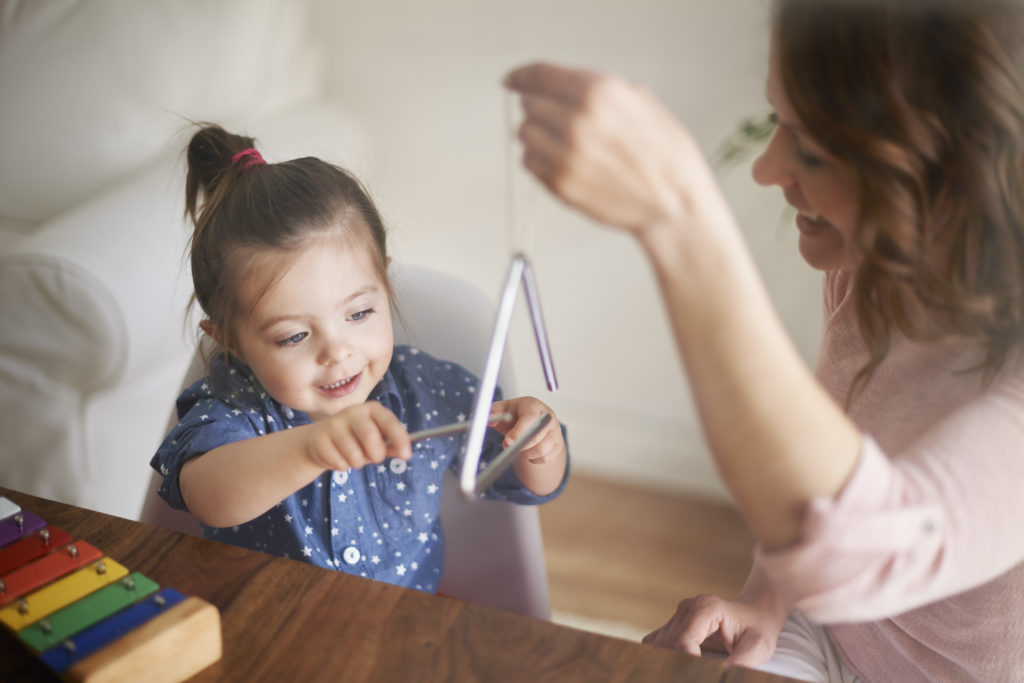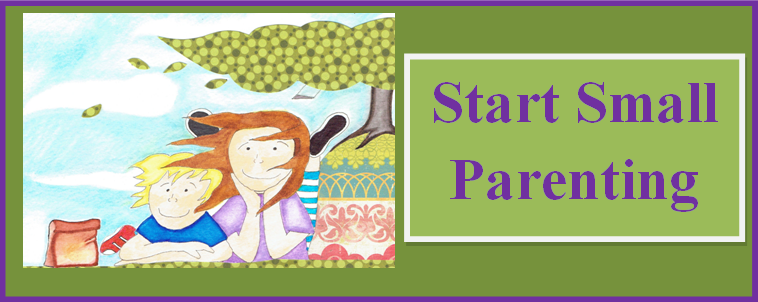
If you are scanning through this blog, wondering what will really help, THIS IS my top recommendation. The first step to respectful families – the #1 action that will change the overall picture of your parenting – is making special time to connect.
“But I’m with my child ALL the time,” you might protest. Maybe you are around your child for extended periods of the day. Or maybe you make time to spend with your child every day and that feels special enough.
Special Time, as you will see, is different than most of the other time spent with your child. Some of the main characteristics include giving it a conscious label, making the activity time-limited, no distractions, and alternating activity chooser.
With all the varying family needs to be met, making Special Time a conscious practice gives everyone a chance to feel special and know that their needs are important. This is one of the very best tools you can use to reduce off-track behaviors that occur because your child wants your attention.
Special Time
Special Time is quality over quantity. It’s developmentally appropriate attention.
There are several kinds of Special Time:
- You
- You and Your Child
- Alone Time
- Partner Time
- Family
You
We’ll start with “You” time because it’s often the hardest to get. A day of meeting others’ needs – whether it’s working outside the home to bring in sustenance or inside the home engineering schedules, meals, naps, etc. – can be exhausting with little time left over for you, the parent.
Yet what is often put to the bottom of a needs list is actually VERY IMPORTANT. So important that I must use that ever-popular oxygen mask analogy: Parent’s first, just like on the airplane.
Why? Because…
“Stressed, sleep-deprived, resentful, grumpy people are more likely to make poor decisions.”
Masses of parents would agree with this statement. Sometimes the amount of sleep is completely out of our control. After all, the fact is – you are the parent of an early childhood aged kid and sleep gets interrupted. That’s why it’s even more important to find ways to rest and rejuvenate.
Resilience is an essential component of parenting. If essential resources (like sleep, nutrition, relaxation, fulfillment, exercise, etc.) are lacking, then resilience is, too. And then not just you, but everyone around you suffers.
How it works:
- Plan YOU time for at least 15 minutes daily with no interruptions. (More, of course, if you can.)
- Make sure it’s NOT work (doing laundry definitely does not count). It’s free choice time. Try yoga, walking outside, reading a book, going to a coffee shop, writing in a journal or drawing, talking to an adult friend, or taking a nap. (Just lying down can be good even if you don’t sleep…there’s many benefits to getting horizontal and shifting the blood flow.)
An Example: Rose
Rose has three kids under the age of 5 and her husband works full-time. There isn’t a moment during most days where a child is not hanging on Rose or needing something from her.
Every Saturday morning she has 4 hours to herself where her husband takes the kids. (That’s a bunch of 15 minutes all saved up.) This is consecrated time with no interruptions. Rose can choose to do something or nothing.
“The week is draining as I cater to kids’ needs all day long and rarely see adults. Wednesdays, when I don’t think I can make it to Friday, I just think about my Saturday me-time. Knowing that it’s coming greatly helps my mood and my patience level.” – Rose, Mother of 3
You and Your Child
When I suggest to parents that they carve out a 15-minute space of one-on-one time with their child, I am often met with resistance. “I’m with my children all day long. They’ve got full access. Why should I make even more time?”
The idea here is not quantity. It’s quality. Zero interruptions help to create that quality through undivided attention – no cell phone or gadgets, no household distractions or other kids.
The 7 Eements of Special Time
- Name it: Let your child know you will be starting a new event: Daily Special Time. Briefly describe what it is and what will happen. Use the label each time you mention it or do it.
- Time Limit: The average suggested time is 15 Minutes. It feels like a long time for a child, but does not take parents away from their responsibilities for too long. This lets you both know that there is an end. The rest of regular life is also important. If this is repeated daily or several times throughout the week, the child learns to be less needy when special time ends. She can learn that special time will repeat again.
- Timer: Using a timer helps the child know that this is non-interruption time. It increases their practice of ending an activity. The timer is also a neutral party. Instead of the parent saying, “Okay, my time is up, I need to make dinner,” the timer is in charge of the end, signaling that it’s time to go on to another activity. Analog timers are best. Egg timers with a moveable face are good as are the timers on most ovens. There are also timers that have a visual color that shows how much time is left, disappearing to zero when time is up. These are often quiet without the annoying ticking sound of some egg timers. Some parents use the digital timers on their cell phones, but I discourage this. Gadgets hold the power to pull adult attention. You can avoid that completely by getting a dedicated timer for Special Time.
- Be consistent: Have Special Time often enough – daily if you can – so the child can rely on this recurring practice. Many off-track behaviors occur as ways to get the parent’s quality attention. The reliance on this helps many children relax more into the daily routine and other times when parent’s attention is elsewhere.
- No Distractions: This means no smartphones, electronics, or media. It’s not a time to watch a show together. It’s important that it’s interaction time. Also, remove any human distractions for this limited time if possible.
- Alternate Activity Choosers: By alternating who picks the activity, your child is learning some of the first lessons of sharing and social interaction. One day, your child might want to stack blocks. The next you may choose to draw or paint with your child. Shifting the choice is one small way a child can begin to learn that they are not the center of the family and others’ have needs as well.
- FUN! Even functional activities like washing dishes or feeding the chickens can be fun. Just make sure you are not using the time with the agenda to get household chores done and the need to “finish a task” takes over the focus of quality together time.

Alone Time
Some parents come to me with a sense of exhaustion. They never have any adult time while their child is present. The child is constantly asking to be witnessed or follows the parent everywhere. This makes sense for a toddler. As they child grows, these parents have set up the family dynamics in such a way that this child-centered focus creates a need for the child to always have adult interaction and attention – at all times. This felt good to the parents when the child was small – they were “needed” by the child. As children grow, they develop increasing independence. We can help our child with this or we can hinder it.
Alone Time Special Time can be practiced by the whole family. For a prescribed amount of time, everyone does something on their own. It might be that everyone reads. Or that each person picks their own activity. For a child just learning this, start with short increments (2-5 minutes) and increase it over time. You can also help the child with the decision of what they will do during their Alone Time.
The advantage of this is the child begins to learn self-regulation regarding their own activities. They can learn not to be dependent on external stimulation. It also gives a break to the parent and is helpful when two parents want to interact without interruption.
Parent Time
If you live with a partner in the home, having young children can make the relationship feel like a business. You’re both in the business of running a household. There’s the task of juggling all the parts of work and family that make for quality of life. What often comes in last place is time devoted to the parenting partner.
The first reason that this needs some attention is that our partner can help fulfill many of our needs – romance and sexuality as well as adult camaraderie, commiseration, conversation, witnessing, pleasure, and shared experiences. Date nights and uninterrupted fun for parenting partners is important, yet often hard to get. What are ways that you can share intimacy with your partner, even when a full date night isn’t possible?
Parent Time Special Time occurs in the home. This teaches children that the parents will have an uninterrupted conversation. You can start small (5 minutes!) and work up to 15 or more over time. Having practiced Alone Time will help your child be more successful at having the patience to do their own thing and not interrupt.
For our children to learn first-hand how to have healthy relationships, it’s helpful for them to see this modeled. When the parents take time to talk together or share something special, the children are learning. Their eyes and ears are trained on you even if they are doing their own activity nearby. That’s a big responsibility! Some parents need permission to bring more awareness to the adult relationship and not feel guilty for spending time together. Yes, you have permission!
Family Time
I have saved the best, and maybe the most important Special Time, for last.
Family Time is not only a fantastic way to build connection among all the members, but it’s fun! Ideally, it becomes the highlight of each day. Families spend a lot of time together. With the advance of technology (and I mean this, not as in technological advances, but the advancing like an army into peaceful territory), a lot of time together is actually spent apart. I’m going to ask you to take back the family and create more interactions. Some examples:
- Play a Game
- Build something
- Take a Walk
- Plan a Trip
- Have a Family Meeting
You can find more about the Family Meeting HERE.
Keeping the Timer “Friendly”
As mentioned, using a timer to signal the end of special time helps children practice ending an activity by using a neutral party. “The timer says…”
The timer can be used in this way with other end-point activities, like readying to leave the house, getting in the car seat, or leaving the park. In these examples, the timer signals the END of a time frame. It also allows for preparation time and eases transitions. It helps the child understand that there are societal norms around time expectations and being on time.
If the timer, though, is used only in this way, small children may grow to see the timer as ending something so special and wonderful as uninterrupted parent attention or fun at the park. That’s why it’s great to use the timer for other positive notifications and activities throughout the day. For example:
- Use to show how much time the parent needs before they can engage.
“I’ll be done with dishes in 5 min….”
“When the timer goes off, we can go outside and throw the ball.”
This helps to build excitement for the coming event while building the skill of delayed gratification.
- Use the timer to play a game as the child learns to meet parent’s behavior expectations.
“Who can rake the most leaves before the timer goes off?”
“Can you get in your car seat before the timer goes off?”
“When the timer goes off, everyone put as many toys in the basket as they can.”
The more there is a light, sense of play using the timer, the less chance its bell or ring will become a dreaded signal. Instead, use it in creative ways so that the timer’s sound is welcome and enjoyable.

Building Connection
Special Time is all about increasing your connection and warm relationship with your child.
What we want in our children is best served by connections. As Dr. Laura Markham of Aha Parenting writes, we want a child who….
- Can manage her feelings so she can manage her behavior
- WANTS to follow your guidance (in other words, is cooperative and has a conscience), and
- Knows, deep in her bones, that she is more than enough, just the way she is.(http://www.ahaparenting.com/blog/_punishment_shaming_children)*
This is best developed through connection. If your child develops new off-track behaviors or has a repetitive behavior that causes concern, remember to increase your one-on-one Special Time.
Where to Start?
Start with You and Your Child Special Time. It will be about 1 to 2 weeks before you begin to see the effects of this consistent practice on your child’s behavior. Do this every day for at least a week, if possible, and then 3 to 4 times a week after that.
Your assignment:
- Week 1: You and Your Child Special Time – Daily
- Week 2: You and Your Child Special Time – 3-4x a week
- Week 3: You and Your Child Special Time – at least 2x a week. You can introduce Alone Time or Parent Time 1-2x a week at this point.

